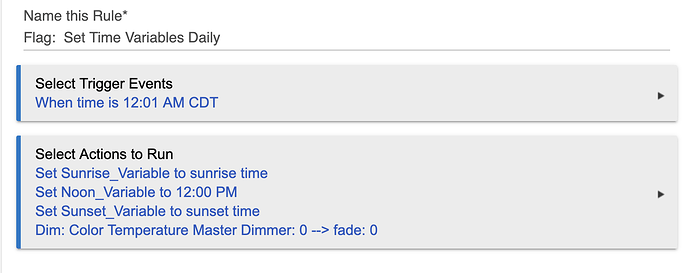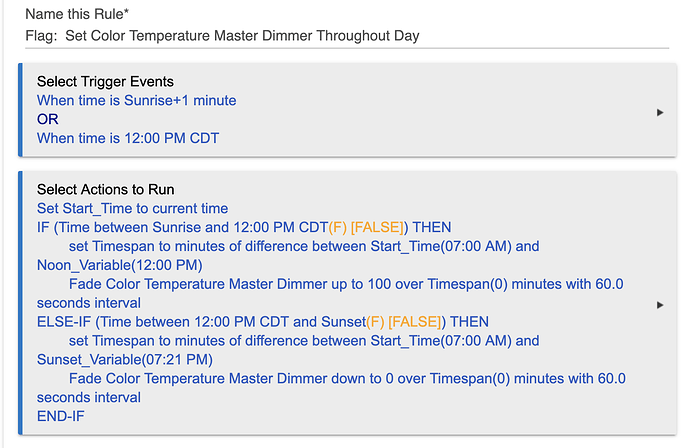@jrau272, love the way you set up your apps to manage CT. Thanks for the inspiration. I have largely replicated your logic--tip of the cap. Two things I did differently fwiw.....
- I took the middle-of-the-night logic that resets CT down to 2700K out of your rule #2 and put it in rule #1 since that runs once every night. Just simplifies the main app a little.
- The bigger change I made is, rather than changing CT over time, I change a virtual dimmer over time (from 0 to 100 in the morning, then fade back down 100 to 0 in the afternoon). This way, your rule #2 doesn't have to care about multiple kelvin variants of the different bulbs, if you have them. I then used @adamkempenich's great Percent to CT App to convert the 0-100 dimmer to CT in kelvin for each bulb. To my thinking, it kept the layers of logic separate. And I believe (??? let's see if works) this way I won't have to embed CT management into any of my lighting automation. The main disadvantage of this approach, which I didn't realize until I did it, is that dimmer-fade can only be done in intervals of 60 seconds max, whereas the CT-fade can be done over a longer interval. Not sure I care since once per minute still isn't a significant load on the hub.
Eh, at the end of the day, to each his own. Just thought I'd share back my approach because I benefited so much by your logic. Props man. My two rules are below if helpful.
EDIT: Night one and I learned an important lesson--if you want to "pre-stage" the color temp of a bulb (i.e., set the bulbs color temp without turning it on), you have to go into the device details screen and set your bulb default to allow prestaging of color. If you don't, then your bulb will automatically power on as soon as you set the color temp.



